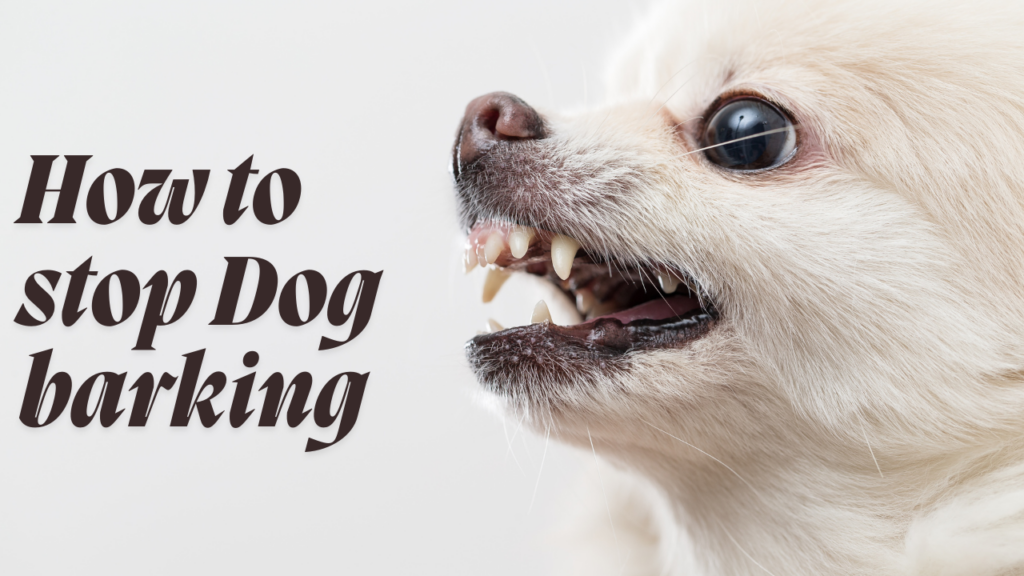Dogs bark to communicate, but too much barking can be problematic for neighbors as well as pet owners. Whether your dog barks out of excitement, anxiety, boredom, or displeasure, knowing the reason will help you to handle it. This post will go over why dogs bark and offer basic, quick strategies to cut undesired barking.
1. Why Do Dogs Bark?
Dogs bark for a variety of reasons; knowing the reason will enable you to come up with the best fix. Dogs bark for the following often occurring reasons:
- Alerting or Warning: Dogs naturally bark when they sense danger or hear unfamiliar noises.
- Seeking Attention: Some dogs bark to get your attention or request food, play, or affection.
- Boredom or Loneliness: A dog left alone for long periods may bark out of frustration.
- Fear or Anxiety: Loud noises, new environments, or separation anxiety can trigger barking.
- Excitement: Dogs often bark when playing or greeting people enthusiastically.
- Territorial Behavior: Many dogs bark when someone approaches their home or yard.
2. Tips to Stop Excessive Barking
Once you figure out why your dog is barking, you can use these techniques to properly control it.
A. Train the “Quiet” Command
By teaching your dog a “quiet” command, you will help them to know when to stop barking. Go through these guidelines:
- Wait for your dog to bark then coolly say, “Quiet.”
- When they stop barking, pamper them and give them compliments.
- Until they pick up the command, keep doing this regularly.
B. Ignore Attention-Seeking Barking
Steer clear of caving in if your dog barks to get your notice. Otherwise:
- Turn away and ignore them till they cease.
- Reward them quietly with treats or attention.
C. Keep Your Dog Mentally and Physically Stimulated
A tired dog is less likely to bark excessively. Ensure they get:
- Daily strolls and leisure activities.
- Interactive toys or puzzle feeders help to keep them interested.
- Sessions of training meant to push their intellect.
D. Reduce Barking Triggers
Try these ideas if your dog barks at particular triggers:
- Strangers or Passersby: Use blinds or curtains to limit their view.
- Noises: Play white noise or calming music to mask outside sounds.
- Other Dogs: Distract your dog with a toy or command when they start barking.
E. Desensitize Your Dog to Stimuli
Gradually expose your dog to their triggers in a controlled way. As in:
- If they bark at doorbells, play a low level recorded doorbell sound and reward quiet behavior.
- As you keep praising peaceful conduct, gradually raise the loudness.
F. Use Positive Reinforcement
When your dog remains calm in settings typically causing barking, reward them. Toys, compliments, and treats can all help to support excellent behavior.
G. Avoid Punishment-Based Methods
Using forceful techniques or yelling at your dog might aggravate barking. Rather, inspire quiet behavior with gentle directives and positive reinforcement.
3. Special Situations
A. How to Stop Barking at Night
- Make sure your dog receives daily enough exercise.
- Create a pleasant sleeping space.
- Try not to reward barking by paying attention.
B. How to Stop Barking When Left Alone
- Leave your dog for brief intervals and progressively extend the time to teach it to appreciate alone time.
- Let interactive toys occupy you.
- If someone has separation anxiety, employ relaxing devices including pheromone diffusers.
4. When to Seek Professional Help
See a professional dog trainer or behaviorist if your dog’s barking is excessive and nothing else appears to help. They can evaluate the matter and offer individualized instruction methods.
Final Thoughts
Although dogs naturally bark, overabundance of this behavior can be controlled with patience, training, and the correct strategy. Applying these techniques and knowing why your dog barks can help you to establish a calm surroundings for you and your animal friend.



